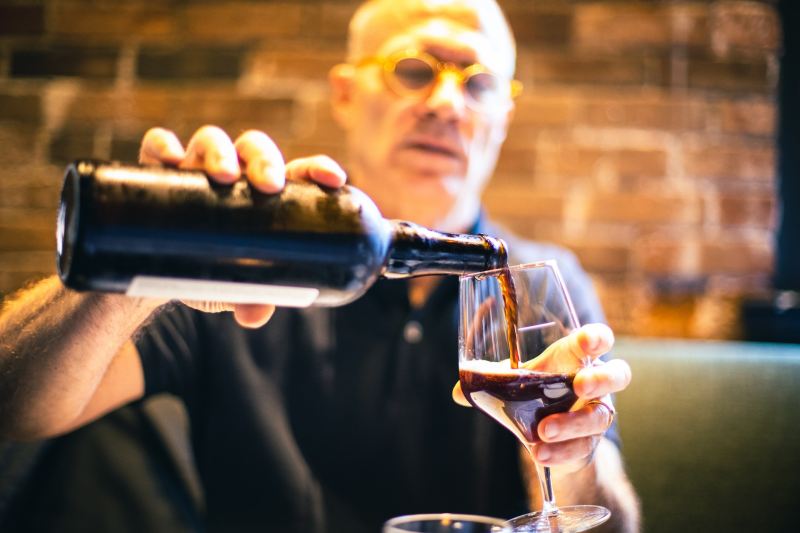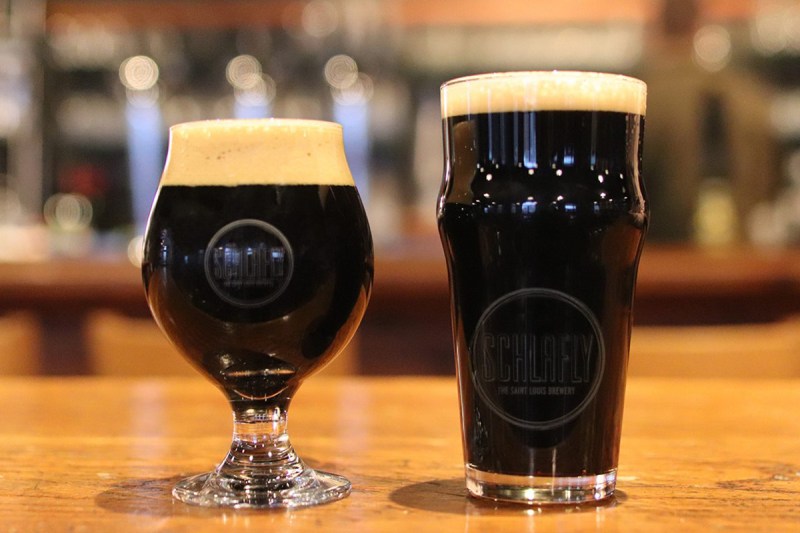
It’s easy to lump beer styles together, especially when we’re talking about a stout vs. porter. But the two are distinctive genres in craft and it pays to know what makes each of them unique to truly enjoy their singularity in the glass. Porter beers and stout beers are perfect for fall and winter, just as they are for the summer. Basically, they’re year-round beers but are sometimes enjoyed more at certain times of the year.
So, before you start confusing West Coast IPAs with hazy IPAs and smoothie sours with standard sours, let’s offer a little wisdom on porter vs. stout. In fact, a little context is especially welcome when it comes to porters and stouts, as even brewers can’t always agree on how the two are different. They have more in common than not, so it can be a little hard to know what you’re sipping and to answer the question, “What is stout beer?”

The history
In short, a stout is a deviation of the porter, born in 18th-century England when dark beers were all the rage. The early versions of stouts are actually referred to as “stout porters,” paving the way for generation upon generation to mix the two up, especially after downing a couple of pints and maybe not thinking as clearly. But the name makes sense, as the stout got its start as a beefed-up version of the porter, clocking in a bit higher in terms of alcohol content.
Early on, porters and stouts differed mainly in terms of where they were positioned on the alcohol spectrum, the stouts being the ones with more kick. They were made this way to better equip folks to better handle dreary off-season weather as well as to be shipped internationally (alcohol functions as a preservative).
But they were also often made a bit differently, with many stout producers opting to use roasted barley. This addition affords many stouts their signature espresso notes. Since, with so many producers now filling out the craft scene, the line of delineation has become blurred. Some self-described porters are more alcoholic than stouts and some stouts (many Irish stouts, especially) are made in a more session-able style, making them lower ABV than a lot of porters. So what is the difference?

It comes down to malt
Malted barley is key in creating a porter. Roasted barley is key in creating a stout. That’s perhaps the boldest and most obvious difference between the two beers that still stands, mostly. Think of a porter kind of like a whopper, smooth and full of all that malty, chocolate cereal-like goodness.
Think of a stout as the byproduct of roasting grains, not quite as extreme as, say, a Scotch whisky, but enough to get some of those roast-y, Java-like bittersweet tasting notes. This is the best way to distinguish the two without taking a deep dive—but if you do want to take the plunge, we highly recommend The Beer Bible by Jeff Alworth.
Porters, often called brown ales, can be a bit lighter than your average stout. The stout tends to be downright opaque, jet black in color. Generally, a porter comes in around 4-6% ABV, with a moderate IBU (International Bitterness Units) count. Stouts run about the same, although it’s common for them to be both a little more alcoholic and have a greater IBU count. One of the best ways to explore the differences between the two is through the most extreme versions of the categories, that is Baltic porters and imperial stouts, which are slightly different than stouts. If nothing else, you’ll hibernate better this winter.
You don’t have to choose sides, of course; they’re similar and delicious, especially as we enter the shortest days of the year. “Porters and stouts are the rare styles that immediately welcome the novice and eternally reward the connoisseur,” wrote Alworth. “These dark styles are like liquid chocolate. No wonder they once conquered the world.”
If you like a beer with a satiny texture and flavors like vanilla, coffee bean, candied fruit, and anise, porters and stouts are for you. Taste a few side by side to enjoy the many similarities and subtle differences between the two iconic beer genres.

Stouts and porters worth trying
It’s an understatement to say that there are a lot of stouts and porters on the market. Picking the right ones to try might even seem a little daunting. You should probably begin your journey with one of the most well-known stouts in the world: Guinness. And while a hand-drawn pint from an Irish bar (preferably one located in Ireland) is best, you’ll still be happy enjoying a nitrogen-boasted bottle or can from your local beer or grocery store.
Other stouts worth trying are Samuel Smith Oatmeal Stout, North Coast Old Rasputin, and Troegs Grand Cacao. Porters worth trying include Deschutes Black Butte, Great Lakes Edmund Fitzgerald, and Oskar Blues Death By Coconut.


